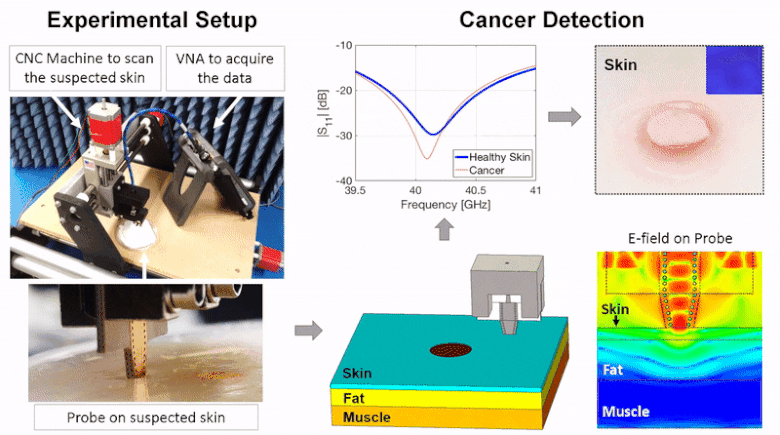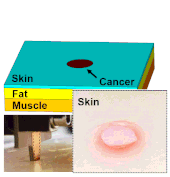
In the fight against skin cancer, early detection is fundamental to ensure high survival rates. However, this is hardly achievable through visual inspection, i.e., the most widely used skin cancer detection technique. Even though some technologies have been recently proposed to mitigate this issue, none of these methods has been widely adopted in practice as they are too expensive, impractical, or highly time-consuming.
This work presents an innovative device that is capable of detecting early-stage skin tumors, while overcoming limitations of current methods. The adoption of substrate integrated waveguide technology makes the probe low-cost, easy-to-fabricate, and simple-to-use. The utilized high-permittivity substrate allows using the probe in direct contact with the skin, thus making it practical and fast. The operation frequency of 40 GHz ensures a penetration depth that allows the probe to detect skin tumors, while being immune to changes in the underneath layers, thus avoiding data misinterpretation.
To ensure the functionality of the device on all skin types and body regions, the probe operates according to a differential approach: the presence of cancer is inferred by detecting relative permittivity changes of the suspected region with respect to its healthy surroundings. As shown above, this is done by processing the reflection coefficient collected by the probe at each scanning position.
The proposed device was designed and simulated, and then fabricated and tested on an artificial human skin phantom. As can be seen above, a CNC machine is used to move the probe and scan the skin, while the reflection coefficient is measured using a VNA. The obtained results demonstrate that the proposed device can effectively detect early-stage skin tumors while being simple-to-use, low-cost, and easy-to-fabricate, thus having the potential of adoption in practice

